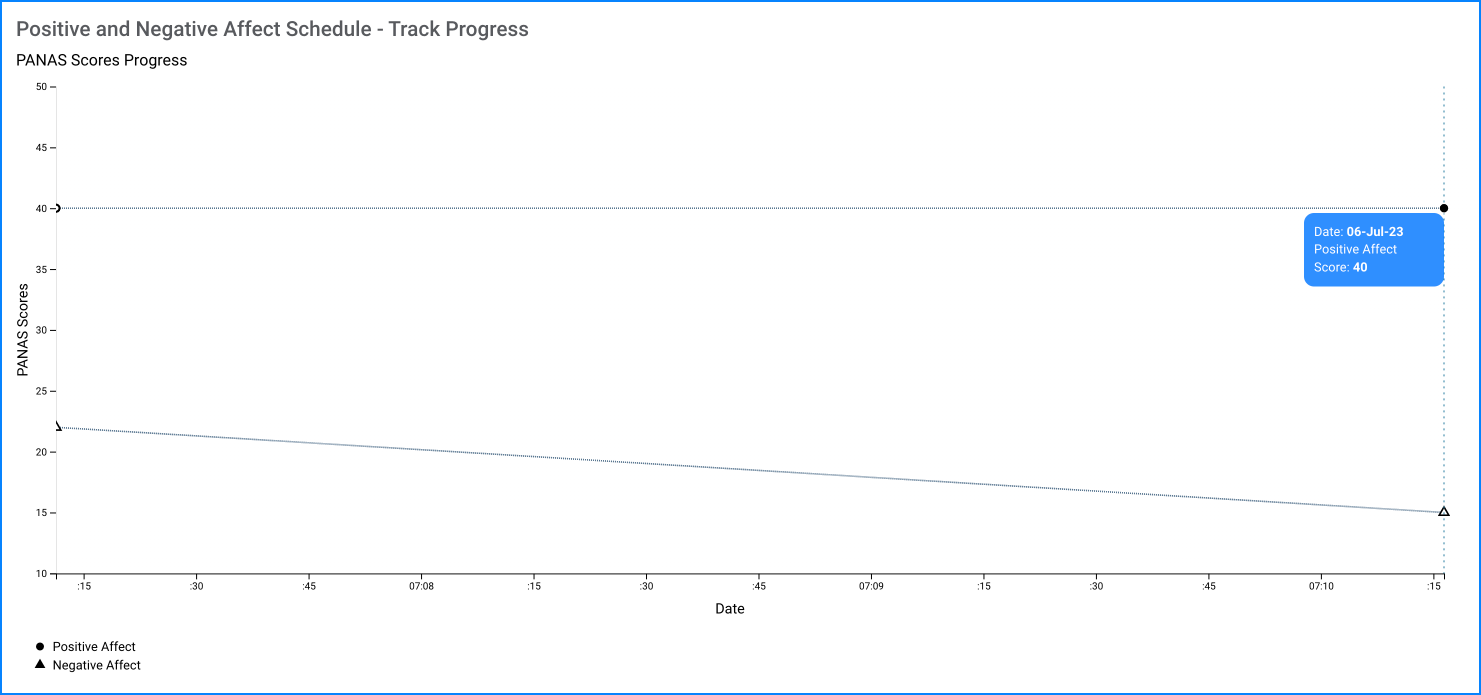The PANAS consists of two 10-item scales to measure both positive and negative affect. Each item is rated on a 5-point scale of 1 (very slightly or not at all) to 5 (extremely).
Positive Affect Score: Add the scores on items 1, 3, 5, 9, 10, 12, 14, 16, 17, and 19. Scores can range from 10 – 50, with higher scores representing higher levels of positive affect.
Negative Affect Score: Add the scores on items 2, 4, 6, 7, 8, 11, 13, 15, 18, and 20. Scores can range from 10 – 50, with lower scores representing lower levels of negative affect.




